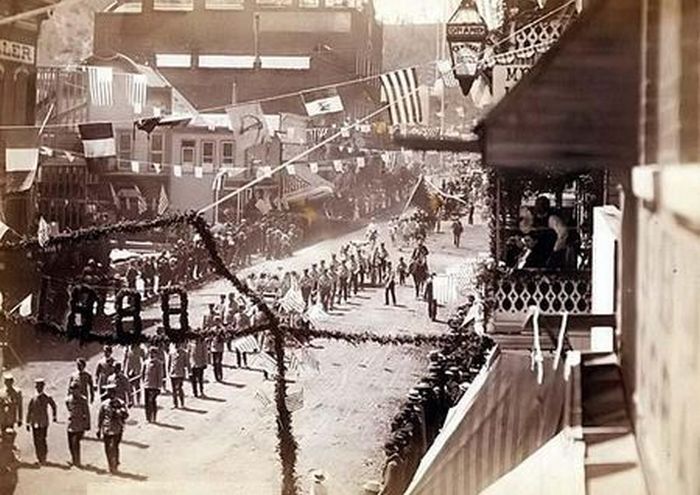|
|
History: American Old West, United States
|
As settlement sped up across the West after the transcontinental railroad was completed, clashes with Native Americans of the Plains and southwest reached a final phase. The military's mission was to clear the land of free-roaming Indians and put them onto reservations. The stiff resistance after the Civil War of battle-hardened, well-armed Indian warriors resulted in the Indian Wars.
According to Gregory Michno, author of the Encyclopedia of Indian wars: western battles and skirmishes, 1850-1890, there were more conflicts with native Americans in the states bordering Mexico than in the interior states. Arizona ranked highest, with 310 known battles fought within the state's boundaries between Americans and the natives. Also, when determining how many deaths resulted from the wars, in each of the American states, Arizona ranked highest. At least 4,340 people were killed, including soldiers, civilians and native Americans, over twice as many as occurred in Texas, the second highest ranking state. Most of the deaths in Arizona were caused by the Apache. Micho also says that fifty-one percent of the Indian war battles between 1850 and 1890 took place in Arizona, Texas and New Mexico, as well as thirty-seven percent of the casualties in the county west of the Mississippi River.
In the first half of the 19th century the Comanche, in the words of a U.S. military officer, were “the most powerful nation of savages on this continent.” From their domain in Comancheria, the Comanche and their allies, the Kiowa and Plains Apache, resisted the expansion of Spanish and Anglo settlements in Texas. Beginning in the 1820s and continuing until the 1860s the Comanche launched many large-scale and destructive raids that impacted Mexico hundreds of miles south of the Rio Grande River (Comanche-Mexico Wars). The Comanche also came into conflict with the independent Republic of Texas and the United States but retained control of Comancheria until after the Civil War.
In the Apache and Navajo Wars, Colonel Christopher "Kit" Carson forced the Mescalero Apache onto a reservation in 1862. Skirmishes between Americans and Apaches continued until after the turn of the century. In 1863-1864, Carson used a scorched earth policy in the Navajo campaign, burning Navajo fields and homes, and capturing or killing their livestock. He was aided by other Indian tribes with long-standing enmity toward the Navajos, chiefly the Utes. Later in 1864, he fought a combined force of more than one thousand Kiowa, Comanche, and Plains Apache at the First Battle of Adobe Walls. Carson retreated but he managed to destroy an Indian village and winter supplies. On June 27, 1874 Bat Masterson and a small group of buffalo hunters held off a large Indian force at the Second Battle of Adobe Walls. In the Red River War which followed the U.S. army systematically destroyed Comanche property, horses, and livelihood in the Texas panhandle, resulting in the surrender of the last Comanche war chief, Quanah Parker, in June 1975.
|
|









